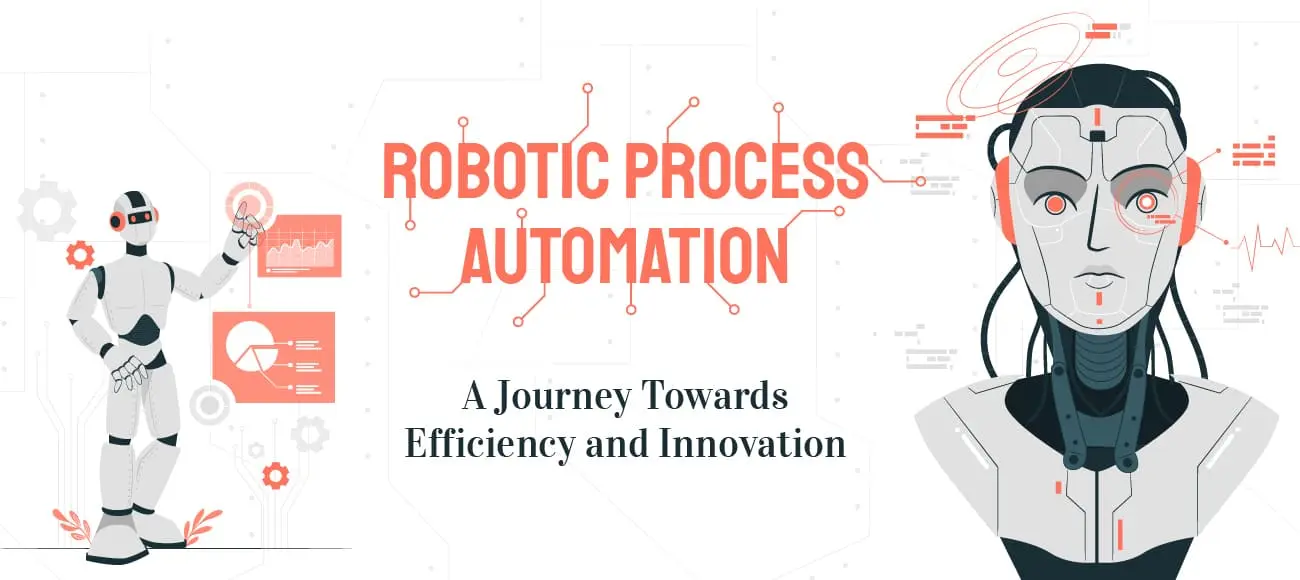
16 Sep Embracing Efficiency and Innovation: A Deep Dive into Robotic Process Automation
In today’s fast-paced digital landscape, businesses are constantly seeking new and innovative ways to optimise their processes, enhance productivity, and boost their bottom line. Enter Robotic Process Automation (RPA) – a revolutionary technology that is reshaping the way organisations handle mundane, repetitive tasks, allowing employees to focus on more strategic and value-added activities.
In this blog, we will take a comprehensive look at RPA, understanding its core concepts, benefits, applications across industries, and potential challenges. From the early days of mechanical automation to the modern era of intelligent bots, we’ll explore how RPA has evolved, and its potential to revolutionise businesses across the globe.
The Evolution of RPA
To understand the significance of Robotic Process Automation, it’s essential to appreciate its historical context. The seeds of automation were sown during the industrial revolution, where machines replaced manual labour, transforming the manufacturing sector. However, the real transformation came with the advent of computers and software automation, allowing businesses to automate processes beyond the factory floor.
Over time, RPA emerged as a specialised branch of automation that utilised software robots or “bots” to mimic human actions, interacting with applications, and handling repetitive tasks. Early RPA solutions were simple, rule-based bots designed to perform singular tasks. But, as technology advanced, modern RPA evolved to encompass machine learning, natural language processing, and artificial intelligence, enabling intelligent automation.
Understanding RPA and its Key Concepts
Robotic Process Automation is a technology that utilizes software bots to perform tasks that were traditionally performed by humans. These bots interact with applications and systems, mimicking human actions, and follow predefined rules and logic. The key concepts in RPA include:
- Bots: The software entities that execute tasks according to predefined instructions.
- Workflows: A series of steps that the bots follow to complete a process.
- Orchestrators: RPA platforms that manage and coordinate the execution of bots.
- Unattended and Attended Automation: Unattended automation refers to bots operating without human intervention, while attended automation involves bots working alongside human employees.
- Cognitive Automation: Advanced RPA that utilises AI and machine learning capabilities to handle complex and cognitive tasks.
The Advantages of RPA
The adoption of RPA brings a myriad of benefits to organisations, both large and small. Some of the key advantages include:
- Increased Efficiency: RPA eliminates human errors and accelerates task completion, leading to higher efficiency levels.
- Cost Savings: By automating repetitive tasks, businesses can reduce operational costs, particularly in labour-intensive processes.
- Enhanced Accuracy: Bots execute tasks with precision, minimising errors and improving data accuracy.
- Scalability: RPA solutions can be easily scaled to handle increased workload demands, promoting business growth.
- Employee Empowerment: By offloading mundane tasks to bots, employees can focus on more strategic and creative aspects of their roles, leading to increased job satisfaction.
RPA in Various Industries
Robotic Process Automation has found its way into diverse industries, each benefiting from its implementation in unique ways.
- Finance and Banking: RPA automates data entry, customer onboarding, and fraud detection, streamlining financial operations and enhancing customer experiences.
- Healthcare: RPA simplifies patient record management, insurance claims processing, and appointment scheduling, freeing up healthcare professionals to concentrate on patient care.
- Retail and E-commerce: RPA optimizes inventory management, order processing, and customer support, leading to quicker response times and reduced operational costs.
- Human Resources: RPA handles payroll processing, candidate screening, and employee onboarding, simplifying HR operations.
Challenges and Considerations
While the benefits of RPA are compelling, it’s crucial to recognize the challenges associated with its implementation:
- Complexity of Processes: Not all processes are suitable for automation, as some may be too complex or require subjective decision-making.
- Change Management: Employees may initially resist the introduction of bots, fearing job displacement. A proper change management strategy is vital for successful adoption.
- Security Concerns: As RPA involves data interaction, ensuring data security and compliance with regulations becomes a top priority.
- Maintenance and Scalability: Regular maintenance and updates are necessary to keep the RPA system efficient and secure.
Conclusion
Robotic Process Automation is a game-changing technology that empowers businesses to streamline operations, reduce costs, and unlock unprecedented levels of efficiency. As RPA continues to evolve and integrate with cutting-edge technologies like AI and machine learning, its potential for revolutionising the global business landscape becomes even more evident.
To leverage the true power of RPA, organisations must embark on a well-planned digital transformation journey, fostering a culture of innovation and adaptability. By embracing RPA as a strategic enabler, businesses can position themselves for success in the digital age, staying ahead of the curve and reaping the numerous rewards that this disruptive technology has to offer.

Sorry, the comment form is closed at this time.